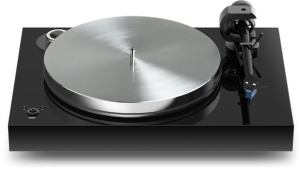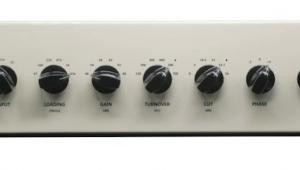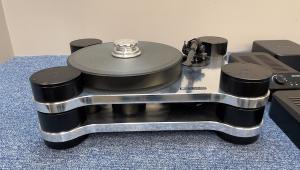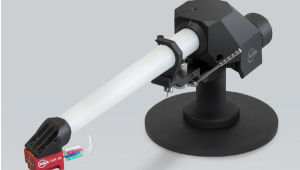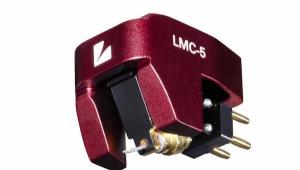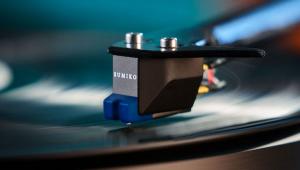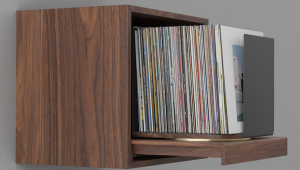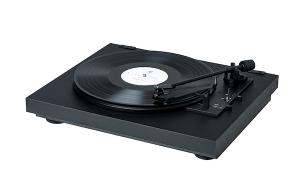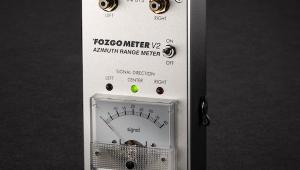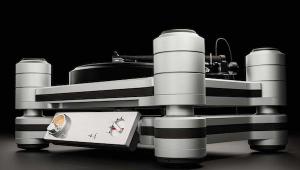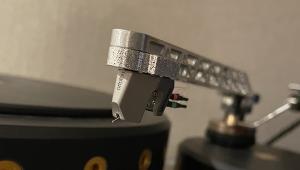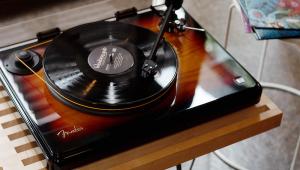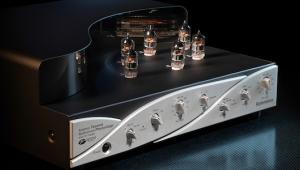Reed Muse 3A Turntable
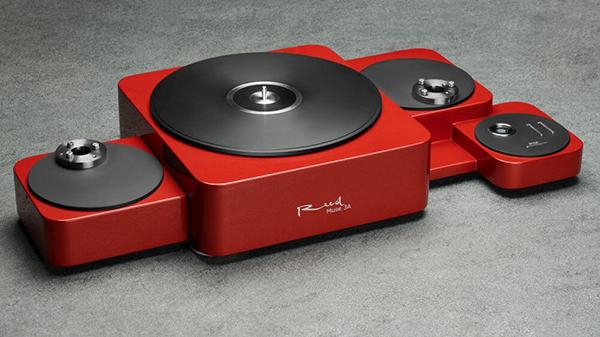
In honor of Audiophile Day, we here at AP thought we’d put the spotlight on a new turntable that gets our high-end hi-fi juices flowing — and the Reed Muse 3A ’table fits that bill to a T.
Some of you may already be familiar with a pair of other great Reed ’tables — namely, the Muse 3C and Muse 1C, both of which share some features with the new 3A.
Before we get to what’s new and what’s shared amongst these cool Reed ’tables, here’s a background refresher on this small but formidable Lithuanian company. Designer, company owner, and radio engineer Vidmantas Triukas has been professionally active in the hi-fi audio gear universe since 1985. Triukas spent much of his time working in what’s known as the “scientific acoustic and ultrasound area,” researching the transmission of acoustic noise in different materials, and he has three patented inventions in that related field. As for the company itself, in addition to turntables, Reed also offers tonearms and related accessories like a tonearm lift, extra headshells and custom boxes to keep them in, and a record mat.

The eagle-eyed art appreciators amongst us will readily observe that the design of the Reed Muse 3A very much follows the Bauhaus style, which tends to focus on clean, geometric shapes and rounded corners. The entire body of the 3A, including the bottom, is made out of birch plywood, which the company says “makes it durable, stable, and non-resonant.”
The Muse 3A comes in three different color options (all of which can be seen throughout this story): Carnelian red, white, and black. The platter, which is raised slightly above the main body and the hidden support feet, is said to “create an illusion of a light, almost hovering item.”

The Muse 3A’s main bearing system mirrors the one used in the Muse 3C — i.e., the main axis is a reverse sliding thrust ball. That bearing ball is made from stainless steel, and the ’table’s lateral stability is said to be achieved by “using a very durable and low-noise sliding bearing.”
The Muse 3A has a user changeable traction system that can be switched to belt drive or friction drive operation — again, similar to that of the Muse 3C. That said, the main difference between the new Muse 3A and the prior models, the 3C and 1C, is the Muse 3A uses a single, powerful, precision coreless DC motor, which is said to “ensure less noise coming from the drive system, which may be transferred to [the] LP and phono cartridge.”

The Muse 3A also sports a digital control system indicator, which specifies the rotating speed of the platter (33 1/3rpm and 45rpm) along with other operating system info. Additionally, the display shows an inclinometer connected to a “very accurate” level, which is said to assist with horizontality adjustments.
The Muse 3A allows users to mount one or two tonearms — either center, or off-center — with an effective length from 9.5in to 12in inclusive.
Other specs include a quartz-based phased-locked loop (PLL) speed stabilizing system, max average speed deviation of ±0.05%, supply voltage of +12V DC via a 100-240V AC adapter, dimensions of 345 x 150 x 560mm (w/h/l) with one tonearm mounting and 345 x 150 x 730mm (w/h/l) with two tonearm mountings, a packed weight of 23kg, and an unpacked weight (i.e., sans tonearms) of 15kg.

The new Reed Muse 3A turntable has an SRP of 15,000€, which converts to $15,729 U.S., given the current exchange rate at the time of this posting.
For more about Reed, go here.
To find an authorized Reed distributor, go here, and scroll down to the “Our Partners Worldwide” section.



